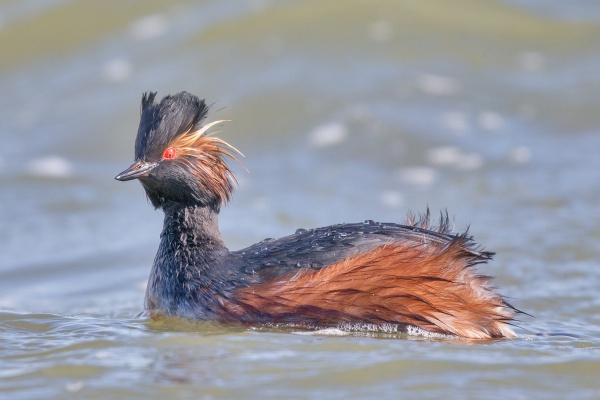Facts About Black-necked grebe
The black-necked grebe, known as the eared grebe in North America, is a captivating water bird from the grebe family. First described by Christian Ludwig Brehm in 1831, the bird is notable for its striking breeding plumage, featuring ochre-colored feathers behind its eyes and ear coverts. There are three recognized subspecies: the nominate, californicus, and gurneyi. Outside the breeding season, the grebe exhibits more subdued greyish-black feathers and white underparts. This species is found across Africa, Eurasia, and the Americas.
The black-necked grebe has a diverse diet, consuming insects, crustaceans, mollusks, tadpoles, and small fish. It constructs floating cup nests on open lakes, laying one or two clutches of three to four eggs during the breeding season. The chicks are relatively independent, managing on their own after about 10 days and fledging in three weeks.
Remarkably, these birds can migrate up to 6,000 kilometers. Post-migration, they become flightless for two months while they molt. Despite the risks associated with migration, the black-necked grebe is classified as "Least Concern" by the IUCN. However, they do face threats from oil spills, diseases like avian cholera and West Nile virus, and habitat disturbances. While these threats exist, they are not currently significant enough to put the species at serious risk.
This bird was initially described by Carl Ludwig Hablitz in 1783 and is closely related to the silvery grebe and Junin grebe. They breed in freshwater lakes across Europe, Asia, Africa, and the Americas and migrate to saline lakes for molting. Black-necked grebes are social birds, often forming large colonies during the breeding season.
Behaviorally, these grebes are socially monogamous and sometimes engage in conspecific brood parasitism, where they lay eggs in the nests of their own species. They primarily forage by diving and feed on various aquatic organisms. Before their molt migration, they gain weight to prepare for the journey to their wintering grounds. Notably, they are not proficient flyers and avoid flying except during migration.
Diseases such as avian cholera, avian botulism, and West Nile virus can lead to significant mortality in black-necked grebe populations. As of 2016, the species is considered "Least Concern" with an estimated global population of around 3.9 to 4.2 million individuals. Despite potential threats, the overall population is either stable, increasing, or uncertain in trend.

 Zambia
Zambia